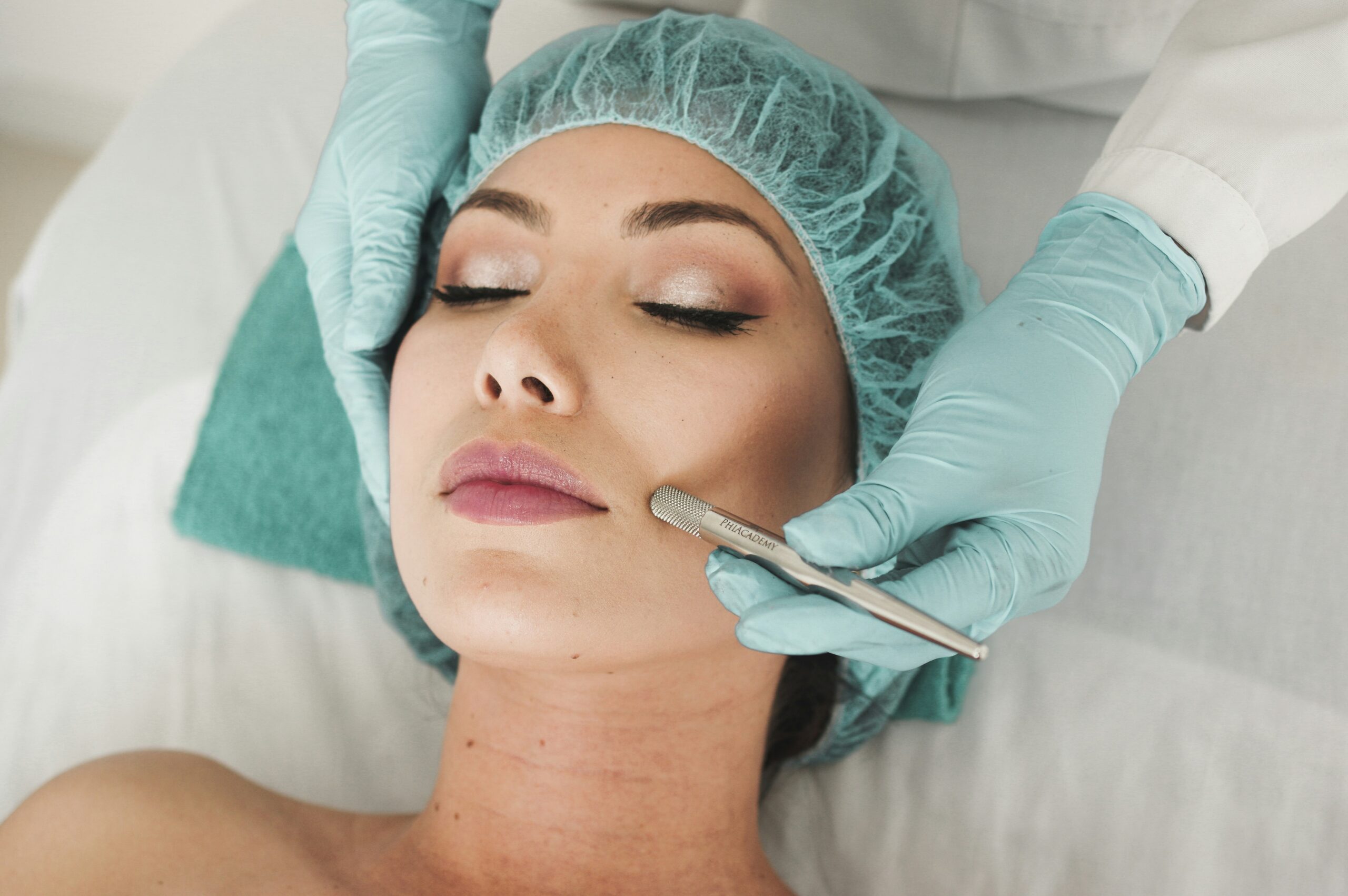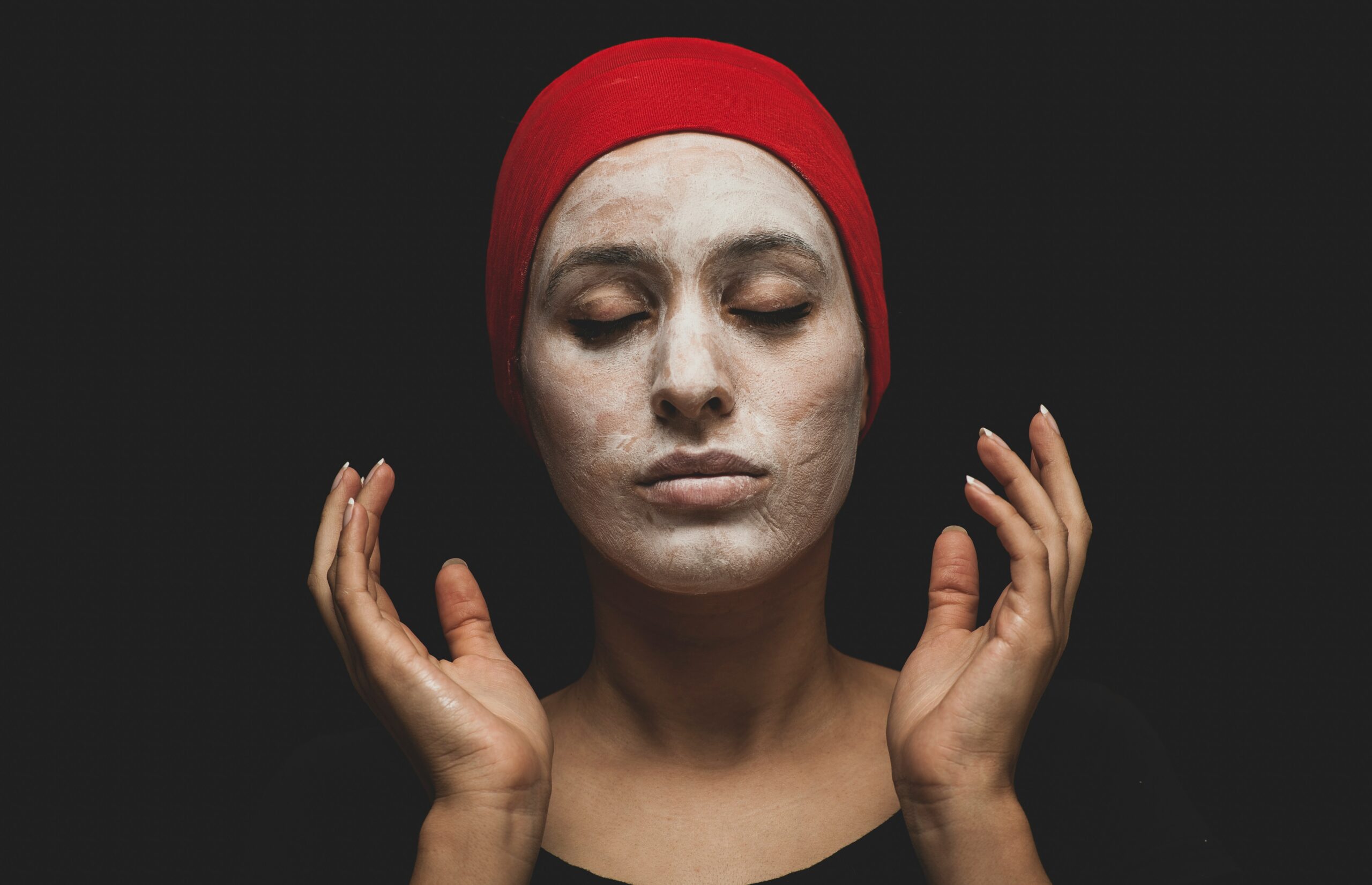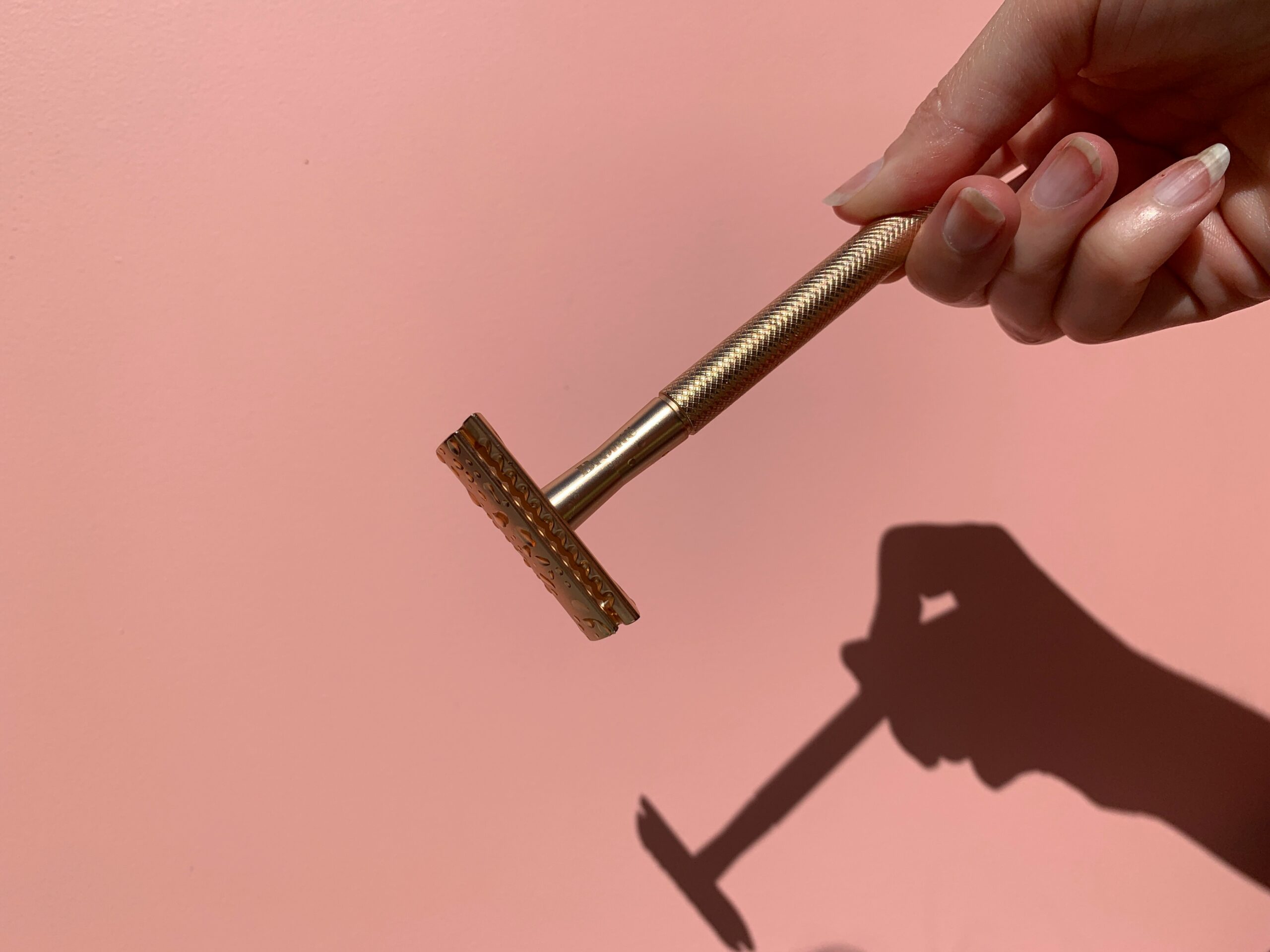Dermaplaning is a safe idea for exfoliation. Indeed, these cosmetic procedures are emerging as an integral aspect of skin care. New methods are being introduced in modern cosmetic surgeries to attract patients and treat their skin. As a relatively new and modern process, more scientific data on dermaplaning must be available. However, many clients look forward to this new skin rejuvenation method and feel the results are generally satisfactory.
Dermaplaning is a two-for-one treatment. Hair removal, which also causes exfoliation, is the primary reason behind this treatment. The face is carefully grazed with a sharp blade, cleaning fine hairs and dead skin cells. The shaved face with the peeling effect highlights that the skin is smoother and more regular. This skincare trend has become a go-to treatment in mil of beauty salons globally. This is another way to exfoliate the skin without chemicals. So we can perform the cosmetic procedure without worrying about developing an allergic reaction to cosmetics. These, as well as other cosmetic procedures that work in the same manner, can have serious side effects like infections, permanent scarring, etc.
There are fewer risks involved in dermaplaning since it is a less invasive technique. Dermaplaning also provides little discomfort when performed by a trained professional. Hence, one of the best things about this innovative cosmetic procedure is that there are also disadvantages that need to be considered before starting the treatment.

For an in-depth explanation of the process, dermaplaning involves a close look at the skin from an anatomical standpoint. Above all, the epidermis![]() is a crucial protective barrier of the skin. The skin has several layers, the most superficial being the stratum corneum, our key protective layer. However, the skin just below comprises cells that reproduce these upper layers and replace them every two weeks. As such, epidermal exfoliation treatments are temporary and should be performed regularly to maintain desirable outcomes.
is a crucial protective barrier of the skin. The skin has several layers, the most superficial being the stratum corneum, our key protective layer. However, the skin just below comprises cells that reproduce these upper layers and replace them every two weeks. As such, epidermal exfoliation treatments are temporary and should be performed regularly to maintain desirable outcomes.
Plus, the dermis is where we find the two forms of collagen![]() responsible for providing elasticity to our skin. That collagen is used to plump your skin & provide its youthful glow, and several treatments can stimulate the production of new collagen. Purifying is not seen as if the dead cells of problem skin may exfoliate and remove hair with a scalpel. However, chemical peels are processed so that anyone is still reluctant to become popular.
responsible for providing elasticity to our skin. That collagen is used to plump your skin & provide its youthful glow, and several treatments can stimulate the production of new collagen. Purifying is not seen as if the dead cells of problem skin may exfoliate and remove hair with a scalpel. However, chemical peels are processed so that anyone is still reluctant to become popular.
First described in the 1970s![]() , dermaplaning was used to treat skin lesions, including acne vulgaris
, dermaplaning was used to treat skin lesions, including acne vulgaris![]() . It should be done with a medical-grade scalpel or an automated dermatome similar to what we use for split-thickness skin grafting. Skin stretching is also key. This ensures it's a deep exfoliation but only of the surface layers, removing them without irritating them. Thus, patients should experience no pain with dermaplaning.
. It should be done with a medical-grade scalpel or an automated dermatome similar to what we use for split-thickness skin grafting. Skin stretching is also key. This ensures it's a deep exfoliation but only of the surface layers, removing them without irritating them. Thus, patients should experience no pain with dermaplaning.
For places that still perform these procedures, using a sharp blade necessitates physician supervision in some cases. Some experts even take a full hour to complete the procedure to avoid skin irritation. Skin bleeding can sometimes be difficult to control, but it is usually within the safe limit.
Dermaplaning is a procedure for facial skin. The tool used is not too difficult to remove small, fine, and soft hairs on the face. Functionally, it is restricted to removing the top part of the epidermis and above. The most frequent goal for the treatment is superficial skin resurfacing.
Dermaplaning has a lot of pros. There are a lot of patients interested in the new cosmetic procedure. It is a non-aggressive facial rejuvenation procedure and is high-security. This method is most beneficial as part of a comprehensive skin care program, including sun protection and lifestyle alterations. Here is why you should get a dermaplaning treatment.

The procedure should only remove the delicate peach fuzz on our faces. The overgrown hair on women's faces is a cause of embarrassment and can cause them to have low self-esteem. Dermaplaning is a good way of removing them easily and briskly. Hair can also be a hiding place for bacteria and dirt, resulting in different skin issues. Hence, when you remove that hair, your skin is cleansed more. Interestingly, after performing this procedure on the face, hair will not grow back thicker, more leathery, or longer, so you do not have to worry about these adverse symptoms. Just let skin without fine hairs become pretty and bright.
This exfoliation of dead cells leads to fresh, clean skin, where dermaplaning pops off. It exfoliates the skin by sloughing off dead cells in a process similar to a typical mechanical peel. Shaving the face with a peeling effect makes your skin smoother and even. It will also help the makeup to be more evenly spaced out. Dermaplaning also induces collagen and elastin production, resulting in skin tightening. Therefore, it is a long-lasting cosmetic treatment. It reduces wrinkles and scars. The skin is cleansed, lightened, and ironed out, considerably reducing pores.
This allows the facial products to be absorbed more easily by your face after treatment since they will not have to permeate through layers of dead skin before reaching live cells. This is another benefit of this therapy. After the hairs are removed, the cosmetics take effect more quickly and better since they do not stick to them but are applied directly on your skin. You will get the full effect of facial creams and other cosmetics if you use dermaplaning. This is also often suggested by a lot of registered cosmetologists to pre-treat the skin for different treatments. This is why dermaplaning is an excellent pre-treatment for chemical or laser peels.

The exfoliation is severe but removes the skin's surface layers without damaging them. However, follow the correct posture to prevent mutilation in the long run. A professional cosmetologist uses a plane on which the removal of hair and skin is carried out. A scalpel is required to have a pointed this is useful área for cutting very sharp. Thus, a misused scalpel or an unfortunate event during the action can irritate patients. However, trained staff should not be causing any harm to the patient and will always advise on prepping patients for dermaplaning procedures beforehand. Dermaplaning, therefore, stands as an excellent method, with far fewer postoperative complications than those associated with other methods for skin removal.
The treatment of dermaplaning is unique as it does not use any chemicals in the process. This adds more security as well. No chemicals are used during the process, so there is no chance of an allergic reaction to different agents and substances. That means that we can all relax and not worry about any adverse effects of the procedure in the form of skin inflammation or other issues. Experts can say people with this suspicion of skin allergies may well go ahead.
Dermaplaning gives immediate results and another benefit that can mean a big deal to some people. Once you leave the beauty salon, your face gets a super glow and better skin tone. The skin will absorb cosmetics faster, and your makeup will last longer. Dermaplaning is also a treatment that allows long-term outcomes. You must repeat the procedure occasionally, but it should work for several weeks.
Studies done on dermaplaning are scarce. Consequently, not much is known regarding recommendations and contraindications for the procedure. Hence, you must consult a doctor or dermatologist before the procedure. Although there is a reasonable use case for dermaplaning, here are some examples.

Acne can lead to scarring on the face, which many patients tag as a beauty spoiler. A face scarred by acne confronts the reconstructive surgeon with a difficult task. This is why some experts recommend less aggressive techniques to these patients, such as dermaplaning. This technique, performed with a special device, ensures the accurate fitting and alignment of skin. However, we can improve with mild acne scars, and more severe lesions may need some help. Dermaplaning relieves the skin of acne scars, making it a suitable pre-treatment for reconstructing deprived skin. It can provide a cosmetically appealing outcome for those with extreme scarring in conjunction with scalpel surgery on the face.
Dermaplaning is a gentle way to fight local and grid wrinkles. Mature skin often battles sensitivity and may be easily irritated, so a more invasive exfoliation treatment is not always for everyone. Dermaplaning, meanwhile, can work well for those with sensitive skin desiring a revitalizing effect. Note that this cosmetic technique is typically only used on superficial lines and wrinkles. That means it is ideal for those with an aging complexion, especially if you are in the early stages of showing signs of skin sagging.
In females, the facial hair will almost always be fine and not concerning to patients. However, those more masculine facial hairs are something that some women would prefer not to have and deal with. Genetic factors might cause it. However, excessive facial hair can happen in women at any age. Much of the time, this is due to serious hormonal changes. In such cases, it needs to be identified by the doctor so that hair growth will become less significant. But now and then, female patients have to be pushed for results there, and dermaplaning comes into play. In addition, the procedure has many other advantages, such as restoring and smoothing the skin.
Dermaplaining is mostly safe and will not have side effects, but you may want to recover properly. Even though the process does not involve any chemicals, some still cannot (and shouldn't) use them. Before the procedure, these need to be considered and studied. Always adhere to your doctor's advice so that you do not have any further problems or discomfort.

Some skin conditions make someone an unsuitable candidate for dermaplaning, which will only exacerbate the skin. Examples include active acne. This is great for acne scarring; however, you would want to avoid exfoliating like this over ongoing acne. This is because the sebum from these glands needs to mix with facial skin hair so it can be excreted from your skin. Blocked glands cause more pimples if the hair is removed and oil collects. Another contraindication for dermaplaning is if the patient presents with severe skin disorders like eczema or psoriasis. Sunburns also make such a procedure impossible.
Some medications can affect the safety of this treatment. For many people, this is the case with steroid drugs and chemotherapy, but it pays to enquire. So, if you are under any medications and wish to try this cosmetic procedure, ensure it is safe for you beforehand. You can only pursue the process once you have been approved. This procedure is not recommended even by certain specialists for diabetes people.
As clean as dermaplaning typically is (no chemicals to risk allergy or irritation), there's still a small chance of it. But that only wards off an allergy to nickel or whatever else could be used as such a scalpel. Therefore, you should ask the performer about the tools they use if you have allergic reactions to any metal.

After the procedure, you need to abide by all the specialist's advice. While dermaplaning is a non-surgical procedure, it does require some care. Proper pre-treatment and post-care will further improve results. Exfoliants should not be used for several days before the process. This is why chemical or enzymatic peels are a no-go. Also, before that appointment, you should not shave skin with wax/razor or laser depilation.
You can not sunbathe for some time after the procedure. During this period, you must apply high-protection filters to your face because the skin becomes even more sensitive to UV radiation and is susceptible to discoloration from sunlight. Moisturizing is one of the important steps in aftercare. It is worth choosing creams with a decent nutrient load on the skin.
You can also do dermaplaning by itself at home. This is understandable, as many of us at home get rid of unwanted hair using a razor or other means. Also, do not forget that shaving should not be quick, as you need to be gentle when taking the razor in your hand. Therefore, please do not hurry, and ensure you care for each of them.
Before dermaplaning, cleanse your skin with cleansers that cater to all sensitive skin types. Then, dry your skin well. With a single hand, pull the skin taut. Now, grab the disinfected razor blade with your other hand and take it over on top of the right side of your face at a proper angle. Shave in short strokes. Avoid the eye area and work from top to bottom.
Rinse your face with cold water and pat it dry after you shave. The skin after shaving is particularly sensitive, and to moisturize your well-exfoliated epidermal coverlet, you should use cream or a special moisture serum. But if you do not feel strong enough to start with a similar operation, please give up and make an appointment for consultation.